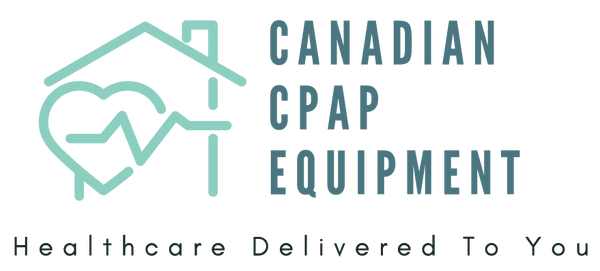For individuals relying on CPAP therapy for sleep apnea, the thought of traveling can sometimes bring a wave of anxiety. How do you pack it? Will it work overseas? What about airport security? The good news is that traveling with your CPAP machine is not only feasible but also highly recommended to ensure you maintain your therapy and enjoy your trip. If you have recently been diagnosed or suspect you may have sleep apnea, consider starting with a quick and convenient home sleep apnea test before beginning CPAP therapy or taking your equipment on the go.
With a little planning and preparation, your CPAP can be your best travel companion. Here are essential tips for a restful journey with your CPAP.
1. Understand Airline Regulations and Security
- CPAP as a Medical Device: Most airlines and airport security agencies (like CATSA in Canada or TSA in the US) classify CPAP machines as medical devices. This means they do not count towards your carry-on baggage limit. Always carry your CPAP machine in its own dedicated travel bag.
- Carry-On is Best: Never check your CPAP machine in your luggage. It could be lost, stolen, or damaged. Keep it with you in the cabin.
- Security Screening: Be prepared to remove your CPAP machine from its bag at security checkpoints. It will likely go through the X-ray machine. You may be asked to remove the water from the humidifier chamber before screening. Inform the security officer that it is a medical device.
- Documentation: While not always required, it's a good idea to carry a copy of your prescription and a letter from your doctor stating your need for CPAP therapy. Some airlines or international destinations might request it.
2. Power Considerations: Adapters and Converters
- Check Voltage: Most modern CPAP machines are auto-sensing and can operate on voltages from 100V to 240V, making them suitable for international travel. However, always check your machine's power brick for its voltage input range.
- Plug Adapters: You will likely need a plug adapter to fit your CPAP machine's plug into foreign outlets. These only change the shape of the plug, not the voltage.
- Voltage Converters (Rarely Needed): If your CPAP machine is not auto-sensing (which is rare for newer models), and you're traveling to a country with a different voltage, you would need a voltage converter. Double-check your machine's specifications to avoid damage.
- Battery Packs: For camping, long flights without power outlets, or in case of power outages, a portable CPAP battery pack can be a lifesaver. Ensure it's compatible with your machine and meets airline regulations for lithium-ion batteries (usually carried in carry-on only).
3. Water for Your Humidifier
- Distilled Water: Always use distilled water in your humidifier to prevent mineral buildup and extend the life of your machine. This can be challenging to find while traveling.
- Alternatives: If distilled water is unavailable, you can use bottled water (purified or spring water) as a temporary solution. However, be aware that this may lead to mineral deposits, requiring more frequent cleaning of your humidifier chamber upon your return. Some users opt to skip the humidifier altogether for short trips if they can tolerate it.
- Empty Before Travel: Always empty your humidifier chamber before packing your machine to prevent water damage.
4. Packing Your CPAP Equipment
- Dedicated Travel Bag: Use the Travel CPAP machine dedicated travel bag, which is designed to protect it.
- Organize Components: Keep all components (machine, hose, mask, power cord) neatly organized within the bag.
- Cleaning Supplies: Pack a small amount of mild soap or CPAP wipes for daily cleaning of your mask and humidifier chamber.
5. Using CPAP on a Plane
- Notify Airline in Advance: If you plan to use your CPAP machine during a flight, notify your airline in advance (at least 48-72 hours). They may require specific forms or have policies regarding in-flight medical device use.
- Power Outlets: Not all aircraft seats have working power outlets. Confirm availability with your airline. Even if available, they might not provide enough power for your CPAP machine, especially if it has a humidifier. A battery pack is a more reliable option for in-flight use.
- Humidifier Use: Airlines typically advise against using the humidifier function during flight due to potential water spills and electrical considerations. If you need humidification, consider a heat and moisture exchanger (HME) filter that attaches to your mask.
6. Adjusting to New Environments
- Time Zones: When crossing time zones, try to adjust your CPAP usage to your new local sleep schedule as quickly as possible. This helps your body adapt.
- Altitude: If traveling to high altitudes, consult your doctor. Some CPAP machines have automatic altitude adjustment, but others may require manual adjustment or a different pressure setting.
Traveling with CPAP doesn't have to be a hassle. By following these tips, you can ensure your sleep apnea therapy remains consistent, allowing you to enjoy your travels feeling refreshed and energized. Don't let sleep apnea keep you from exploring the world!
Next Steps: While CPAP is highly effective, it's not the only option. In our next post, we'll explore other sleep apnea treatment options beyond CPAP.

